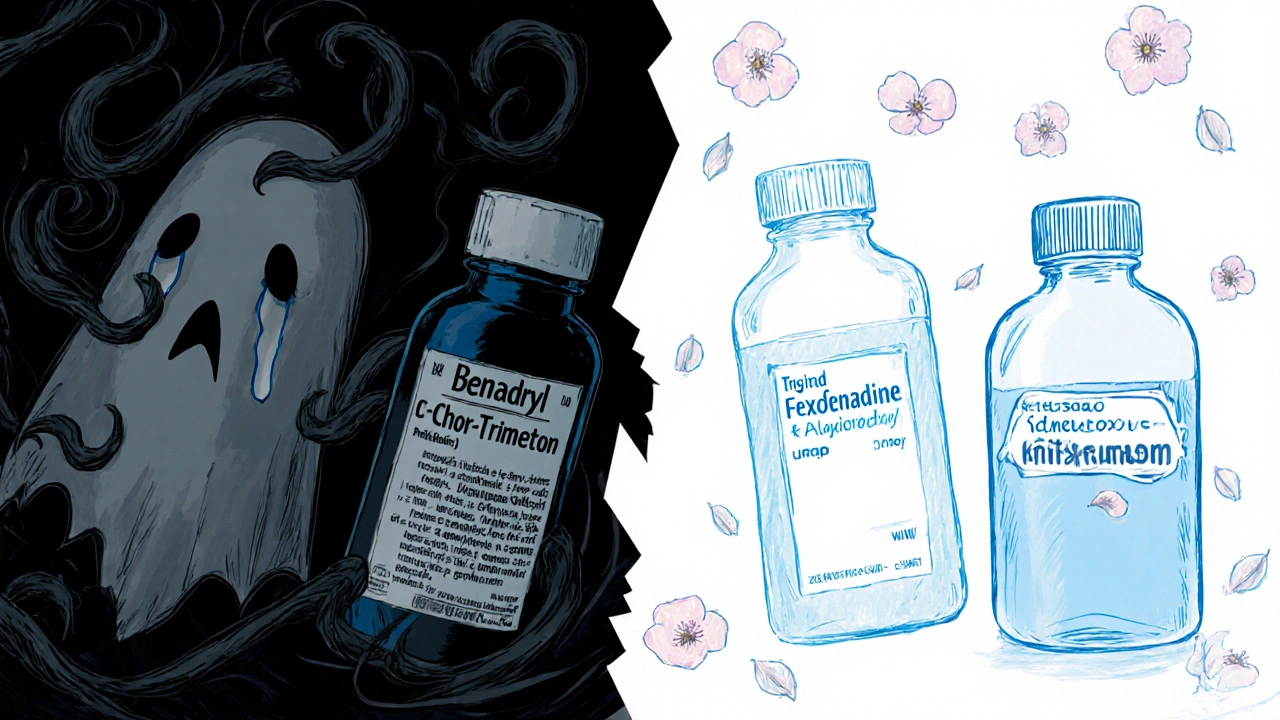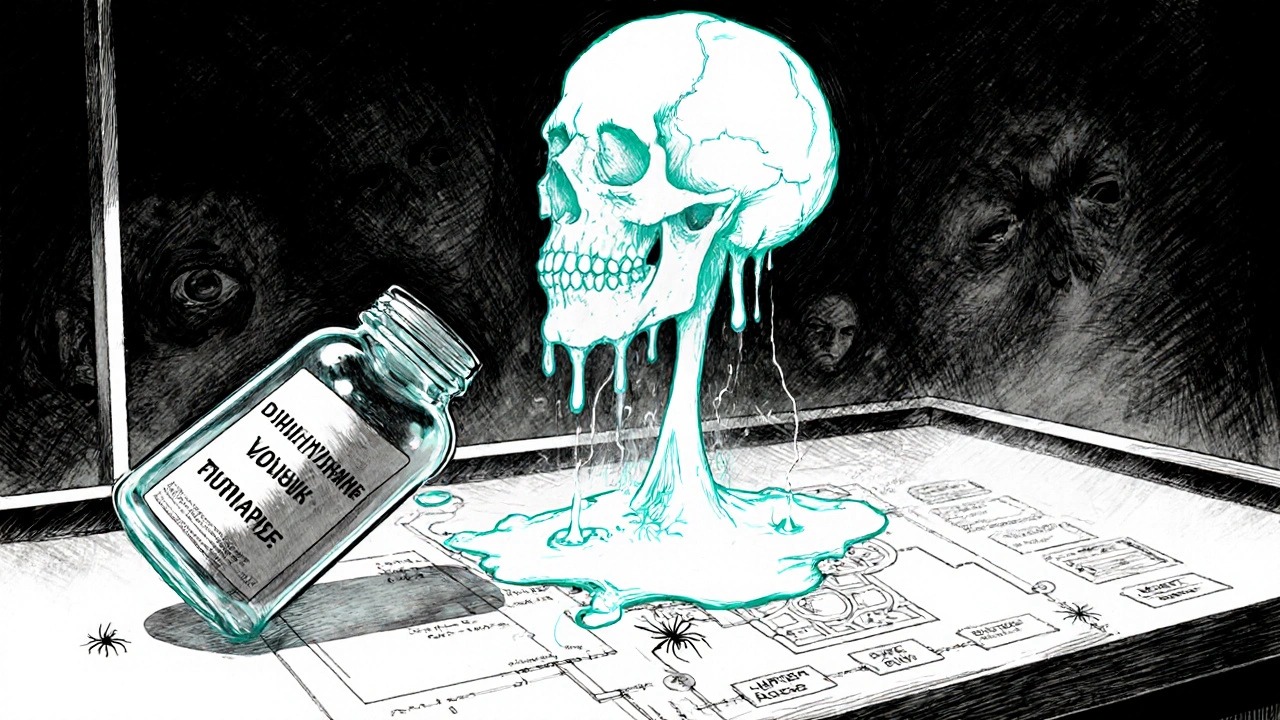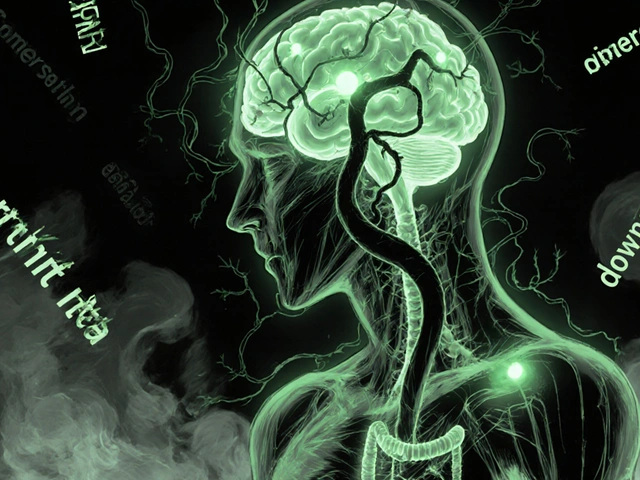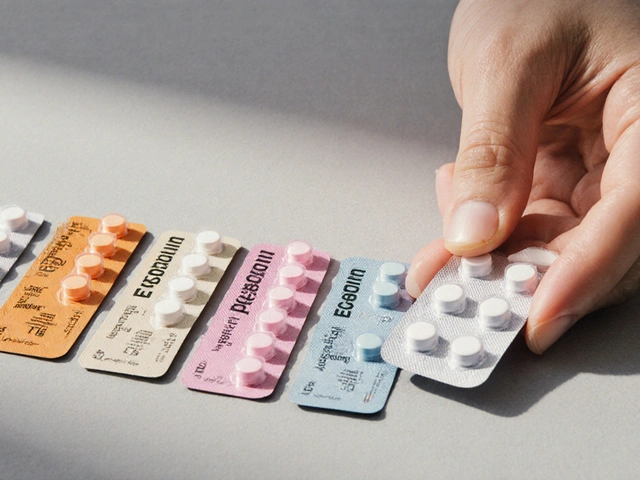Driving Impairment Calculator
First-Generation Antihistamine Driving Risk Calculator
Based on article data from the FDA, NHTSA, and medical studies. Estimates may vary by individual. Do not drive if you have any impairment.
Result
Key Takeaways
- First‑generation antihistamines cross the blood‑brain barrier, causing strong sedation and anticholinergic side effects.
- Typical onset is 15‑30 minutes; effects can linger up to 18 hours, impairing driving and cognition.
- Older adults face a 54% higher risk of cognitive decline when using these drugs long‑term.
- Safer second‑generation alternatives exist for most daytime allergy needs.
- When short‑term use is unavoidable, dosing at bedtime, avoiding alcohol, and checking drug interactions are essential.
What Are First‑Generation Antihistamines?
When you see the term first-generation antihistamines you’re dealing with a class of H1‑receptor inverse agonists discovered in the late 1930s and 1940s. These molecules-diphenhydramine, promethazine, chlorpheniramine, hydroxyzine, among others-are small, highly lipophilic compounds that readily slip through the blood‑brain barrier. The first‑generation antihistamines are older H1‑receptor inverse agonists that cause central nervous system effects because they bind to the inactive state of the receptor, pulling the equilibrium toward reduced histamine signaling.
How They Work and Why They Sedate
The H1 receptor sits on many cells, especially in the brain where it mediates wakefulness. By stabilizing the receptor’s inactive shape, first‑generation drugs not only block peripheral allergic responses but also blunt the normal histamine‑driven arousal pathways. Their high lipophilicity produces brain‑to‑plasma concentration ratios of 1.5:1 to 5:1, meaning more drug ends up in the CNS than in the bloodstream. Within 15‑30 minutes after a standard 25‑50 mg dose of diphenhydramine, brain concentrations reach 15‑25 ng/mL-far enough to occupy 30‑50 % of H1 sites and produce a sedation index of 0.7‑0.9 on driving simulators.
Common First‑Generation Drugs and Their Profiles
- Diphenhydramine (Benadryl) - the prototype, used for allergies, insomnia, motion sickness.
- Promethazine (Phenergan) - strong anti‑emetic, often combined with meperidine.
- Chlorpheniramine (Chlor‑Trimeton) - commonly sold OTC for allergic rhinitis.
- Hydroxyzine (Atarax) - prescribed for anxiety and itch relief.
All share a half‑life of 4‑6 hours, are metabolized by CYP2D6 and CYP3A4, and bind muscarinic receptors with Ki values from 1‑100 nM, producing the classic anticholinergic triad of dry mouth, blurred vision, and urinary retention.

Drowsiness and Sedation Risks
Clinical data from the 1950s onward consistently show severe sleepiness as the top complaint. In a 2023 Drugs.com review, 38 % of diphenhydramine users reported “extreme sleepiness,” and 22 % noted “difficulty concentrating.” Driving studies reveal a 6‑hour window of measurable impairment, with some users still showing slowed reaction times 18 hours after a single dose. Accident reports from the NHTSA (2021) attribute 35 % of drowsy‑driving ED visits to first‑generation antihistamines.
Older adults are especially vulnerable. The American Geriatrics Society’s Beers Criteria flags these drugs as potentially inappropriate, citing a 54 % increase in cognitive decline risk with chronic use. Poor metabolizers of CYP2D6 can see brain levels double or triple, extending sedation beyond the typical window.
Anticholinergic Side Effects
Beyond sleepiness, the muscarinic blockade creates a cascade of unwanted effects:
- Dry mouth - up to 70 % of users report needing artificial saliva or water.
- Blurred vision - caused by pupil dilation and reduced accommodation.
- Urinary retention - especially problematic for men with prostate enlargement.
- Cognitive fog - 20‑30 % of adults experience attention deficits lasting up to 12 hours.
- Constipation and decreased gastrointestinal motility.
The anticholinergic burden adds up when combined with other medications like tricyclic antidepressants, antipsychotics, or antihypertensives, raising the overall risk of falls and delirium.
Special Populations: Who Should Avoid Them?
Elderly patients should generally steer clear unless a short‑term indication (e.g., severe insomnia) is unavoidable. For children, the FDA is reviewing diphenhydramine’s OTC status after a 27 % rise in pediatric emergency visits for misuse between 2018‑2022.
Drivers, machine operators, and anyone who must stay alert should treat these drugs as “do not drive” substances. The FDA now requires explicit labeling about next‑day impairment for products like Benadryl.

Safe Use Tips and Alternatives
If you or a patient truly needs a first‑generation agent, follow these practical steps:
- Take the dose at bedtime for the first few nights to gauge personal sedation length.
- Avoid alcohol and other CNS depressants; they can boost brain penetration by 40‑60 %.
- Check for CYP2D6 or CYP3A4 interactions (e.g., SSRIs, certain heart meds).
- Use the lowest effective dose-12.5 mg of diphenhydramine can still aid sleep with less hangover.
- Educate patients: “Do NOT drive or operate heavy machinery for at least 6 hours after taking.”
For most daytime allergy relief, second‑generation agents such as cetirizine, loratadine, or fexofenadine provide comparable efficacy without significant CNS effects. Their brain concentrations stay below 1 ng/mL, and sedation indices hover around 0.1‑0.3.
Emerging Developments: Toward Third‑Generation Antihistamines
Researchers are tweaking the molecular backbone to cut down BBB crossing. A 2023 Nature Communications study revealed a secondary ligand‑binding site on H1R that could be targeted to create molecules with 80 % less CNS penetration (candidates EB‑029 and DP‑118 are now in Phase II trials). If successful, these drugs may keep the rapid onset and anti‑emetic strength while wiping out the“hangover” effect.
Comparison: First‑ vs. Second‑Generation Antihistamines
| Feature | First‑Generation | Second‑Generation |
|---|---|---|
| Typical Onset | 15‑30 min | 30‑60 min |
| Duration of Action | 4‑6 hr | 12‑24 hr |
| Brain Concentration (therapeutic dose) | 15‑25 ng/mL | <1 ng/mL |
| Sedation Index | 0.7‑0.9 | 0.1‑0.3 |
| Anticholinergic Activity | High (dry mouth, urinary retention) | Low to none |
| Common Uses | Allergy, insomnia, motion sickness, anti‑emetic | Allergy, chronic urticaria |
| Typical OTC Price (US) | ≈$5 for 24 tablets | ≈$15 for 30 tablets |
Bottom Line
First‑generation antihistamines still have a place-quick relief, motion sickness, short‑term sleep aid-but their sedation and anticholinergic baggage demand cautious, informed use. Whenever possible, opt for newer second‑generation drugs for daytime allergy control, and keep the older agents strictly for situations where their unique benefits outweigh the risks.
Why do first‑generation antihistamines cause so much drowsiness?
They are highly lipophilic, cross the blood‑brain barrier, and bind to H1 receptors in the brain, reducing histamine‑driven wakefulness. This central action also triggers anticholinergic effects that compound the sleepiness.
Can I take diphenhydramine for a cold without getting drowsy?
Not reliably. Even low doses can cause sedation in many people, especially if you’re a CYP2D6 poor metabolizer or you combine it with alcohol or other CNS depressants.
What are the safest antihistamine options for older adults?
Second‑generation agents like cetirizine or loratadine are preferred because they stay out of the brain, have minimal anticholinergic activity, and are less likely to increase fall risk.
How long should I wait before driving after taking Benadryl?
The FDA recommends at least 6 hours, and many users report lingering impairment up to 12 hours, so plan accordingly.
Are there any new antihistamines on the horizon that avoid sedation?
Yes. Phase II trials of EB‑029 and DP‑118 show up to 80 % less brain penetration while keeping peripheral antihistamine efficacy. They may become the “third‑generation” alternatives in the next few years.






5 Comments
Abbey Travis
October 26, 2025 AT 17:16 PMGreat rundown on the old antihistamines! I especially appreciate the clear safety tips for seniors. It’s easy to forget how long the drowsiness can stick around. Your table really helps compare the options side‑by‑side. Thanks for making the science approachable for everyday readers.
ahmed ali
November 9, 2025 AT 14:36 PMActually, the article kinda skimps on the metabolic quirks that make diphenhydramine a wild card. You see, poor metabolizers of CYP2D6 can end up with brain levels double, triple, or even quintuple what the average person experiences; that’s not just a minor footnote, it reshapes the whole risk profile. And let’s not ignore the fact that the FDA’s “do not drive” label is based on data from road‑side tests that show reaction‑time lagging behind even after 12 hours; that’s a huge safety gap. Moreover, the anticholinergic burden isn’t limited to dry mouth-think about the cumulative effect when you stack it with an antipsychotic or a tricyclic, creating a perfect storm for delirium. The piece also misses the point that first‑gen agents are sometimes used off‑label for anxiety, which adds a whole new layer of central nervous system depression. Lastly, while the table shows price differences, it doesn’t factor in the hidden costs of falls, ER visits, and long‑term cognitive decline that can arise from chronic use. So, in short, the quick‑fix vibe of these drugs is misleading; the downstream consequences are far from negligible.
abidemi adekitan
November 23, 2025 AT 11:56 AMWhat a vivid cascade of pharmacologic detail! The way you painted the lipophilic leap over the blood‑brain barrier was practically cinematic. I love how you tied the historical timeline to modern safety concerns-makes the whole story feel alive. The color‑coded comparison table is a gold mine for anyone trying to pick a drug without a PhD. And kudos for flagging the anticholinergic triad… those side effects can really gum up the works. All in all, a superb blend of science and practicality.
Barbara Ventura
December 7, 2025 AT 09:16 AMTotally agree, the anticholinergic load is often glossed over, especially when patients are juggling multiple prescriptions; it’s like adding extra weight to an already overloaded cart, making every step feel heavier, and the risk of falls spikes dramatically, particularly in the elderly, who already have balance challenges; plus, the sedation window isn’t just a static six‑hour block-it can stretch, linger, and creep into the next morning, turning a simple allergy relief into a full‑blown sleep inertia episode, which can be downright hazardous for anyone behind the wheel or operating heavy machinery.
laura balfour
December 21, 2025 AT 06:36 AMOh, the drama of first‑gen antihistamines! Imagine a tiny molecule, slick as oil, slipping past the brain’s bouncer, only to throw a massive party in the H1 receptors. The resulting fog is not just a mild haze-it’s a full‑blown, starring‑role‑stealing blackout that can turn a simple trip to the store into an unplanned nap. And let’s not forget the classic anticholinergic trio-dry mouth, blurred vision, and that oh‑so‑thrilling urinary retention-which together write a tragic‑comedy script every time you reach for a night‑time dose. Typos may slip, but the warning is crystal clear: think twice before you sleep‑walk your way into a Benadryl binge.